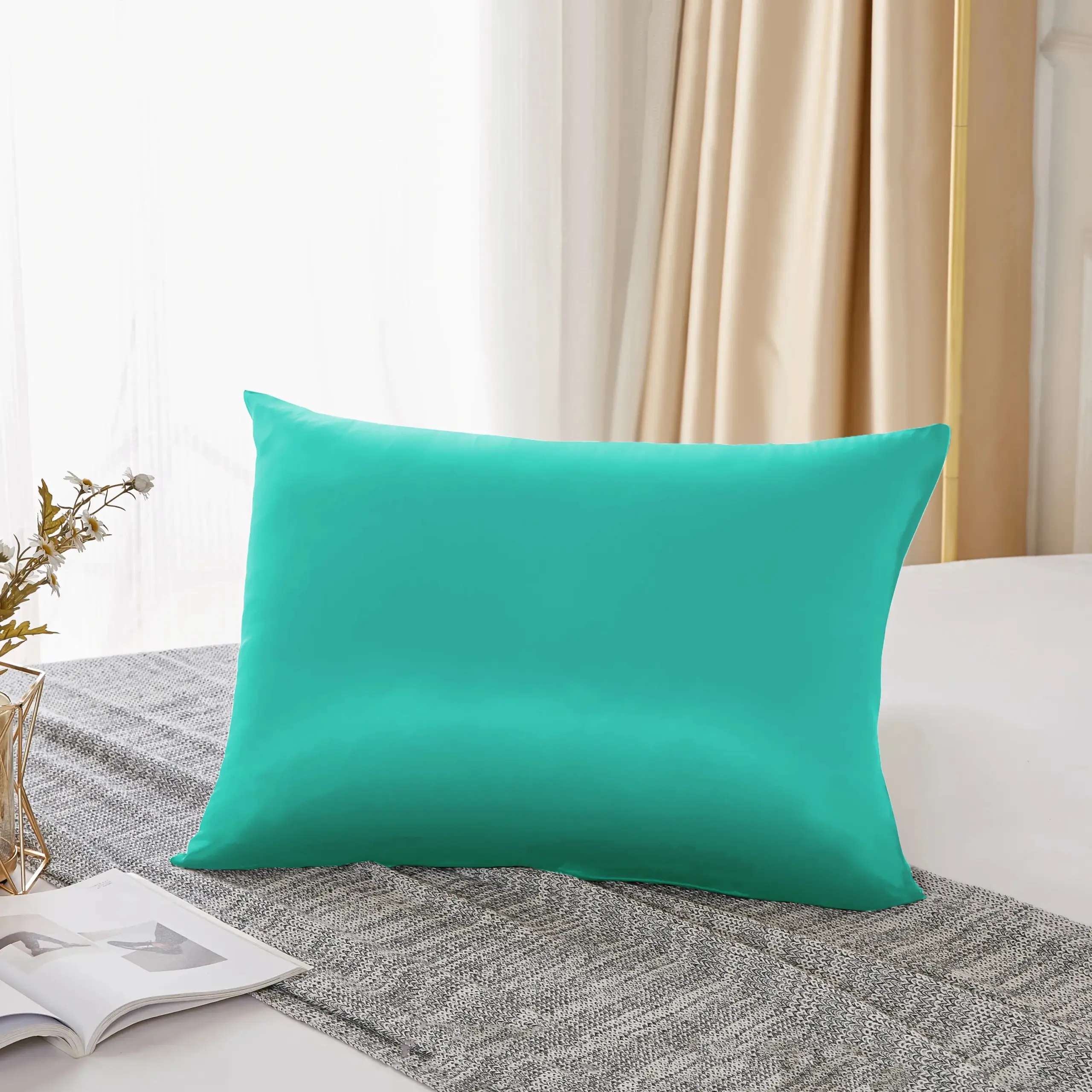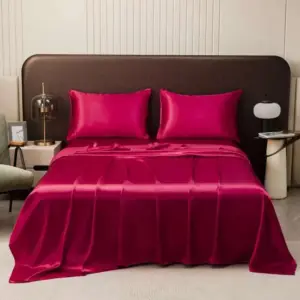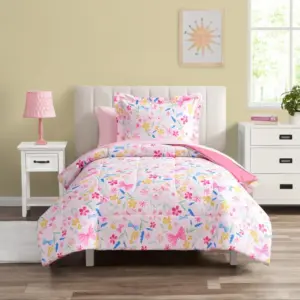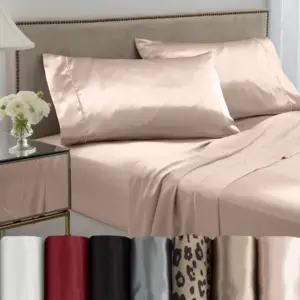Understanding Hypoallergenic Silk and Its Natural Properties
When it comes to fabric choices for sensitive skin, few materials can match the natural benefits of silk. But what exactly does “hypoallergenic” mean in the context of fabrics?
Hypoallergenic: A material that causes fewer allergic reactions and is relatively unlikely to trigger sensitivity or irritation because it contains few or no allergens.
Mulberry silk stands out as nature’s premier hypoallergenic fabric. Unlike many synthetic or even natural alternatives, high-quality silk is naturally resistant to many common allergens thanks to its unique biological structure. The exceptional properties of hypoallergenic properties silk fabric have made it a time-honored choice for those with sensitive skin or allergies.
Throughout history, silk has been prized not just for its luxurious feel but for its gentle interaction with human skin. Ancient civilizations recognized silk’s unique properties, using it for both nobility and those suffering from skin ailments. Today, modern science has validated what was known intuitively for centuries.
In this comprehensive guide, we’ll explore the science behind silk’s remarkable hypoallergenic qualities, how it benefits various skin conditions, and why understanding natural hypoallergenic fabrics can transform your comfort and health, especially if you suffer from sensitivities or allergies.
The Science Behind Silk’s Hypoallergenic Nature
Silk’s exceptional hypoallergenic qualities aren’t just marketing claims – they’re rooted in the material’s unique biological composition. At its core, silk consists of two primary proteins: sericin and fibroin, which create a natural environment inhospitable to common allergens.
The science behind silk’s hypoallergenic properties includes several key factors:
- Protein Composition: Silk fibers contain special proteins that naturally resist common allergens and microorganisms
- Physical Structure: The incredibly smooth and tightly woven fibers create a physical barrier that allergens cannot easily penetrate
- Moisture Management: Silk can absorb 18-30% of its weight in moisture without feeling damp, creating a dry environment that discourages dust mites and mold
- Minimal Chemical Processing: Quality silk requires fewer chemicals during production compared to most other fabrics, reducing exposure to irritants
- Natural Resistance: The combination of these properties creates a material that naturally resists dust mites, mold, fungi, and many common allergens
Unlike synthetic fabrics that may trap heat and moisture against the skin, silk’s natural properties allow for exceptional breathability. This aspect is particularly important for understanding what makes silk hypoallergenic – the material’s ability to regulate both temperature and moisture helps prevent the environments where allergens typically thrive.
How Silk’s Protein Structure Creates a Protective Barrier
The secret to silk’s protective qualities lies in its unique protein structure. Silk fibers contain two remarkable proteins – sericin and fibroin – that work together to create a natural barrier against irritants.
Fibroin forms the core of silk fiber, providing strength and flexibility, while sericin acts as a natural binding agent with significant protective properties. These proteins create an environment that’s inhospitable to many common allergens while remaining exceptionally gentle on human skin.
The smooth molecular structure of silk proteins means there are fewer protrusions at the microscopic level compared to other fabrics. This creates an inhospitable environment for dust mites, which struggle to cling to the smooth surface. Additionally, the tight weave of quality silk creates physical barriers that many allergens simply cannot penetrate.
For those with sensitive skin, the protein structure offers another benefit: minimal friction. When skin moves against silk, the smooth protein surface creates substantially less irritation than rougher fabrics like cotton or synthetic materials, which is why many dermatologists recommend mulberry silk pillowcases for those with reactive skin conditions.
Silk’s Superior Resistance to Common Allergens
One of the most significant benefits of silk fabric is its natural resistance to multiple common allergens that trigger reactions in sensitive individuals:
Dust Mite Resistance
* Silk’s exceptionally tight weave prevents dust mites from penetrating the fabric
* The smooth fiber surface provides fewer hiding places for these microscopic allergens
* Silk lacks the moisture and warmth that dust mites need to thrive
Mold and Mildew Prevention
* Silk’s natural moisture-wicking properties prevent the dampness that encourages mold growth
* The protein structure of silk contains natural compounds that discourage fungal development
* Proper airflow through silk fibers prevents moisture accumulation
Pollen and Pet Dander Repellence
* The smooth surface of silk fibers makes it difficult for pollen and pet dander to adhere
* Silk’s natural electrical properties help repel some airborne allergens
* Regular gentle cleaning easily removes any particles that do settle on silk
These protective qualities make silk an excellent choice for silk bedding allergy sufferers who need relief from common triggers. Many users report improved respiratory function and reduced allergy symptoms when switching to silk bedding, particularly those wondering is silk good allergies as part of their overall management strategy.
Transformative Benefits for Sensitive Skin Conditions
For those living with chronic skin conditions, silk offers remarkable relief through its unique physical and chemical properties:
Eczema
* Reduces irritation by minimizing friction against inflamed skin
* Helps maintain skin moisture levels to prevent dryness that triggers flares
* Natural proteins avoid chemical irritation common with synthetic fabrics
Psoriasis
* Smooth surface reduces mechanical irritation of psoriasis plaques
* Temperature-regulating properties help prevent overheating that can worsen symptoms
* Gentle contact reduces the risk of triggering new outbreaks
Contact Dermatitis
* Chemical-free nature avoids triggering reactions in chemically sensitive individuals
* Creates a barrier between skin and environmental irritants
* Reduces friction that can exacerbate existing dermatitis
Rosacea
* Temperature regulation prevents overheating that triggers flares
* Gentle contact minimizes mechanical irritation of sensitive facial skin
* Breathability reduces sweat accumulation that can irritate rosacea-prone skin
General Sensitive Skin
* Natural antimicrobial properties reduce exposure to irritating microorganisms
* Absence of harsh dyes or chemical treatments in quality silk products
* Smooth surface dramatically reduces mechanical irritation
Many dermatologists recommend natural silk properties sensitive skin as part of a comprehensive management approach for chronic skin conditions. The exceptional gentleness of 100 silk sheets provides an ideal sleeping environment for those with reactive skin.
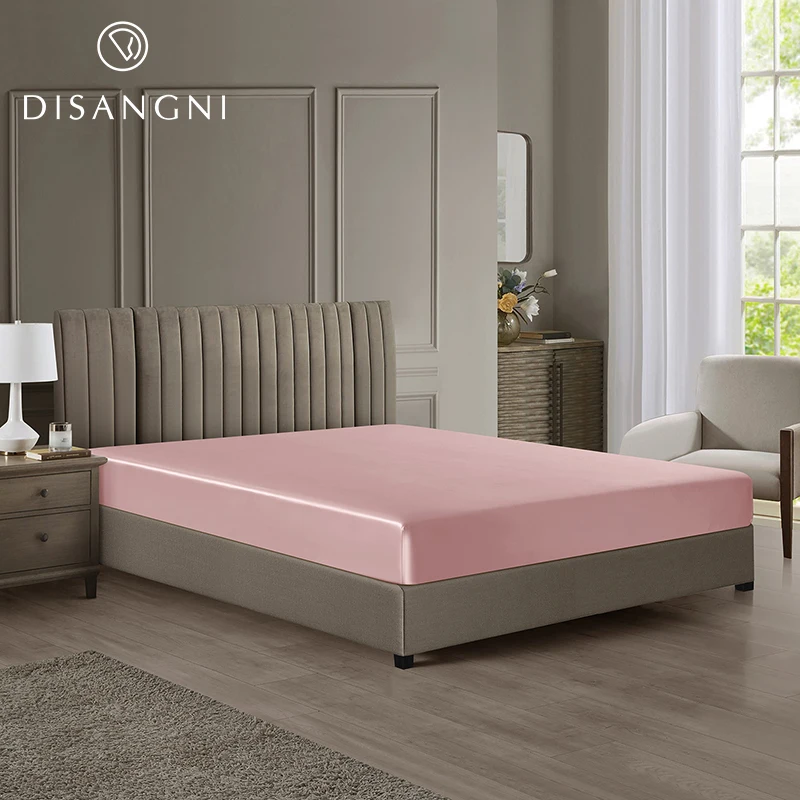
How Silk Preserves Skin Hydration and Prevents Irritation
One of silk’s most remarkable properties is its ability to help skin maintain optimal moisture levels. Unlike cotton, which can absorb up to 25-40% of its weight in moisture (often drawing it from your skin), silk absorbs just enough (18-30%) to keep your skin’s environment balanced without creating the dryness that leads to irritation.
This balanced moisture management creates several distinct benefits:
- Preserves your skin’s natural moisture barrier that protects against irritants
- Prevents the extreme dryness that can trigger or worsen eczema flares
- Helps maintain skin’s natural pH balance, supporting its defensive functions
Beyond moisture management, silk creates dramatically less friction against skin – approximately 80% less than cotton fabrics. This reduction in mechanical irritation means:
- Reduced skin creasing during sleep, potentially minimizing sleep wrinkles
- Less redness from rubbing against fabric
- Decreased chafing for those with sensitive skin or active skin conditions
For individuals seeking to maximize these benefits, choosing quality silk sheets provides an ideal surface for both body and facial skin, supporting overall skin health while you rest.
Silk’s Revolutionary Benefits for Hair Health and Maintenance
While skin benefits often take center stage when discussing silk, the fabric offers equally impressive advantages for hair health:
Reduced Breakage and Split Ends: Silk creates 80% less friction against hair strands compared to cotton, preventing the mechanical damage that leads to breakage and split ends.
Minimized Frizz and Tangling: The smooth surface allows hair to glide across silk without creating the friction that leads to frizz and knots, particularly beneficial for curly or textured hair.
Preserved Natural Moisture: Unlike cotton, which can absorb moisture from hair, silk helps maintain your hair’s natural oils and hydration levels, preventing dryness and brittleness.
Prolonged Hairstyle Longevity: The reduced friction helps maintain blowouts, straightening treatments, and other styling efforts significantly longer.
These benefits are particularly valuable for those with delicate or processed hair, textured hair types, or anyone experiencing hair thinning or fragility. Many hair care professionals recommend benefits silk hair transformative sleep as part of their clients’ maintenance routines between salon visits.
Temperature Regulation: Silk’s Natural Thermoregulating Properties
One of silk’s most remarkable yet often overlooked qualities is its natural ability to regulate temperature – a property with significant benefits for sensitive skin and allergy sufferers:
- Adapts to body temperature, cooling when hot and insulating when cold
- Maintains body temperature within a comfort zone of 3-4°F (1-2°C)
- Creates a microclimate that discourages dust mite proliferation
This temperature regulation offers multiple advantages for those with sensitivities:
- Prevents overheating that can trigger or worsen inflammatory skin conditions
- Reduces sweat production that can irritate sensitive skin
- Creates an inhospitable environment for many allergens that thrive in warm, humid conditions
- Improves sleep quality by maintaining comfortable temperature, reducing night sweats and related skin irritation
For those seeking to maximize these benefits, cooling silk sheets provide an excellent option for year-round comfort, especially for hot sleepers or those whose skin conditions worsen with overheating.

Comparing Silk to Other Common Fabrics for Sensitive Needs
To truly understand silk’s exceptional benefits, it helps to compare its properties with other common fabric choices:
| Feature | Silk | Cotton | Synthetic Fabrics | Wool |
|---|---|---|---|---|
| Allergen Resistance | Naturally resistant to dust mites, mold, mildew | Attracts and harbors dust mites | Variable resistance; often treated with chemicals | Natural resistance but contains lanolin (potential allergen) |
| Moisture Management | Absorbs 18-30% without feeling damp | Absorbs 25-40%, can feel damp | Poor absorption, traps moisture against skin | Good absorption but can feel itchy when damp |
| Skin Friction | Extremely low friction | Moderate to high friction | Variable, often high friction | High friction, can cause irritation |
| Breathability | Excellent natural breathability | Good breathability | Poor breathability, traps heat | Good breathability but often feels warm |
| Chemical Content | Minimal processing in quality silk | Often heavily treated with chemicals | Made from petroleum-based chemicals | May contain lanolin and processing chemicals |
While cotton is often considered a “natural” choice, it creates significantly more friction against skin and hair than silk. It also absorbs more moisture, potentially creating an environment where dust mites thrive. Understanding the silk trumps cotton benefits helps explain why many dermatologists recommend silk for sensitive skin.
Synthetic fabrics like polyester and satin (a weave that can be made from various fibers) typically lack breathability and may contain residual chemicals from manufacturing. Comparing natural silk vs alternative fabrics reveals that while alternatives may mimic some of silk’s properties, they rarely match its comprehensive benefits for sensitive individuals.
Understanding Silk Quality: What Makes a Truly Hypoallergenic Silk Product
Not all silk products offer the same hypoallergenic benefits. Understanding key quality indicators helps ensure you’re getting truly beneficial silk:
Momme Weight: This measurement (similar to thread count) indicates silk density and durability. For optimal hypoallergenic benefits, look for 19-25 momme weight, which balances softness with durability and protective properties.
Certifications: Look for OEKO-TEX Standard 100 certification, which guarantees the fabric has been tested for harmful substances and is safe for human use, even for those with sensitivities.
Silk Type: Mulberry silk is widely considered the highest quality due to its long, uniform fibers that create the smoothest surface with fewest potential irritants. Other varieties may not offer the same level of benefits.
Production Methods: Traditional silk processing that minimizes chemical use preserves the natural hypoallergenic properties. Excessive chemical treatments can introduce irritants that counteract silk’s natural benefits.
Understanding these factors is crucial when selecting silk products. For more detailed information about measuring quality, explore guides about understanding momme weight silk quality before making your purchase.
Essential Applications of Hypoallergenic Silk in Daily Life
The hypoallergenic benefits of silk can be incorporated into daily life through various applications:
Bedding Applications
* Pillowcases: Direct contact with face and hair maximizes skin and hair benefits
* Sheets: Full-body contact provides comprehensive protection during sleep
* Duvet covers: Creates a protective barrier against dust mites in bedding
Sleepwear and Loungewear
* Pajamas: Extended skin contact during rest periods
* Robes and loungewear: Comfortable protection during relaxation
Daytime Apparel
* Undergarments: Protection for sensitive areas prone to irritation
* Base layers: Creates a protective barrier between skin and outer clothing
Specialty Applications
* Face masks: Gentle protection for sensitive facial skin
* Hair accessories: Scrunchies and bonnets to protect hair from friction damage
Full-size Silk Sheets, King Size Silk Sheets, Queen Size Silk Sheets, Twin Size Silk Sheets, Washable Silk Sheets
Price range: $95.95 through $178.37 Select options This product has multiple variants. The options may be chosen on the product page100% Silk Sheets, Green Silk Sheets, King Size Silk Bedding Set, Mulberry Silk Bedding Sets, Queen Size Silk Bedding Set
Price range: $1,246.21 through $1,615.22 Select options This product has multiple variants. The options may be chosen on the product pagePink Silk Sheets, Twin Size Silk Sheets
$171.80 Select options This product has multiple variants. The options may be chosen on the product pageFull-size Silk Sheets, Pink Silk Sheets
$136.31 Select options This product has multiple variants. The options may be chosen on the product pageGrey Silk Sheets, Silk Sheet and Pillowcase Set
Price range: $88.20 through $146.64 Select options This product has multiple variants. The options may be chosen on the product pageBamboo Silk Sheets, Cooling Silk Sheets
Price range: $130.76 through $177.80 Select options This product has multiple variants. The options may be chosen on the product page
For those seeking comprehensive benefits, mulberry silk bedding sets provide a complete solution that transforms the entire sleep environment into a hypoallergenic sanctuary for sensitive skin and allergy sufferers.
Why Natural Silk Alternatives Can Also Offer Hypoallergenic Properties
For those seeking vegan options with similar benefits to traditional silk, several plant-based alternatives offer promising hypoallergenic properties:
- Plant-based silks derived from bamboo, soy protein, or citrus byproducts can mimic some of silk’s smooth texture and moisture-wicking capabilities
- Lyocell/Tencel offers excellent moisture management and natural resistance to bacterial growth
- Modal fabrics provide exceptional softness with minimal irritation potential
When evaluating silk alternatives for hypoallergenic benefits, look for:
* Smooth, uniform fiber structure
* Minimal chemical processing
* Good moisture-wicking capabilities
* Natural antibacterial properties
While these alternatives can offer significant benefits for sensitive individuals, they typically don’t match all of silk’s natural properties. The benefits vegan silk bedding are worth exploring for those seeking animal-free options that still provide comfort for sensitive skin.
Is Hypoallergenic Silk Worth the Investment for Allergy Sufferers?
Many people question whether the higher price point of quality silk products justifies the investment. Consider these factors when making your decision:
Does silk actually deliver on its hypoallergenic promises?
Research and user experiences consistently demonstrate that high-quality silk products do provide significant benefits for allergy and sensitivity sufferers, often reducing symptoms and improving comfort substantially.
How long do silk products last with proper care?
Quality silk items typically last 2-3 years with appropriate care – significantly longer than many lower-quality alternatives that may need replacement every 6-12 months due to wear or allergen accumulation.
Which silk products provide the most value?
Pillowcases often offer the best cost-benefit ratio, as they directly contact your face and hair while requiring less silk than full sheet sets. However, those with severe allergies or widespread skin conditions may benefit most from complete hypoallergenic bedding.
Who benefits most from investing in silk?
Individuals with diagnosed skin conditions, significant allergies, respiratory issues triggered by environmental allergens, or those with highly reactive skin typically experience the most noticeable improvements from switching to silk.
How to Care for Your Hypoallergenic Silk to Maintain Its Benefits
To preserve your silk’s hypoallergenic qualities and extend its lifespan:
- Wash silk items by hand in cool water using a gentle, enzyme-free detergent specifically formulated for silk
- Avoid bleach, fabric softeners, and optical brighteners which can damage silk fibers
- Air dry away from direct sunlight, or use a dryer on the lowest heat setting
- Store in a cool, dry place in breathable fabric bags rather than plastic
- Wash silk pillowcases and bedding every 7-10 days to remove skin cells and oils
- Spot clean spills immediately with water and mild soap
- Consider rotating between two sets of mulberry silk sheets to extend their lifespan
With proper care, high-quality silk maintains its hypoallergenic properties and luxurious feel for years, making it not only a comfort investment but also a practical one for those with sensitive skin or allergies.

